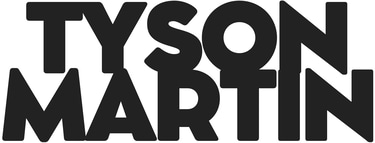Establishing CISO Standards for Business Growth
A Guide for Boards and CEOs


Establishing CISO Standards for Business Growth
In boardrooms and strategy sessions across industries, one topic is increasingly finding its way to the top of the agenda: cybersecurity. But for too long, it’s been framed narrowly focused on threat prevention, compliance checklists, and technology infrastructure. While these are all critical, they fall short of the real opportunity that modern cybersecurity leadership offers. For CEOs, founders, and board members who are serious about long-term growth, resilience, and market leadership, it’s time to fundamentally shift how the Chief Information Security Officer (CISO) role is understood, measured, and integrated. The CISO shouldn’t just protect the business they should accelerate it.
That starts with establishing new standards for what a CISO brings to the table
Not standards in the bureaucratic sense, but standards in the same way we think of high-performance: expectations, principles, and accountabilities that align the CISO with business growth not just defense. Too often, the CISO is isolated from growth conversations, product innovation, and customer engagement strategies. But in today’s interconnected landscape, growth and security are not opposites. In fact, when executed strategically, they are deeply intertwined.
To understand the importance of CISO standards in driving business growth, we first need to address the myth that cybersecurity is merely a cost center. When security is reactive, responding only to threats or compliance audits, it certainly behaves like a cost center. But when security leadership is empowered, proactive, and strategically aligned, it becomes a multiplier. It enables faster innovation cycles, safer customer experiences, trusted digital platforms, and smoother expansion into new markets or product lines. None of those outcomes are possible without a security foundation that supports rather than obstructs.
The question then becomes: what does it take for a CISO to operate at that level?
The answer lies in redefining how we evaluate, support, and embed cybersecurity leadership within the business fabric. High-impact CISOs are not just technical experts they are strategic thinkers who understand business drivers, influence culture, and shape decisions across departments. They bridge the language gap between engineering teams and the boardroom, and they bring a pragmatic, business-first lens to digital risk.
But this shift doesn’t happen on its own. It requires clear standards—set by executive leadership and reinforced at the board level—that outline what good looks like for cybersecurity leadership. These standards begin with access. A CISO must have direct lines of communication to the CEO and, when appropriate, to the board. Burying them under IT or operations leadership diminishes their visibility and influence. If cybersecurity is going to shape growth strategy, it must sit at the same table where those strategies are being designed.
Next, there must be alignment around priorities
The CISO’s goals should not be written in isolation or in language only technologists understand. Instead, they must cascade from the company’s top-line objectives, expanding into new markets, improving customer trust, accelerating innovation, reducing operational drag, and increasing resilience. When security goals are written in that context, the organization starts to see the CISO as a business enabler, not a compliance enforcer.
This alignment requires intentionality. Many organizations still measure the CISO by outdated metrics: number of vulnerabilities patched, audits passed, or incidents blocked. While useful at the tactical level, these don’t reflect the CISO’s contribution to business outcomes. Modern CISO standards must include measures like how quickly the company can pivot to new technologies without introducing new risks, how security impacts customer churn or conversion rates, or how well teams collaborate during a security-driven business transformation.
Another critical piece of CISO standard-setting is talent development.
CISOs who build high-performing security cultures don’t hoard knowledge they multiply it. They equip frontline teams to take smart risks. They help product teams move fast without breaking trust. And they build leadership pipelines so that the security posture of the company is not dependent on any single individual. When the CISO becomes a builder of leadership, not just a defender of systems, their impact becomes exponentially larger.
Culture is often the greatest blind spot in traditional CISO roles. Many boards and executive teams underestimate how deeply cybersecurity is a cultural challenge. An adversarial security culture one that punishes failure, stifles speed, or pits security against innovation will erode morale, degrade performance, and slow growth. The CISO, when held to the right standard, becomes one of the most important culture carriers in the company. They role-model clarity in ambiguity, they invite cross-functional collaboration, and they bring calm to moments of organizational stress. These are not soft skills. These are enterprise-level leadership traits.
But perhaps the most important standard to elevate is trust
Growth requires experimentation. Experimentation requires risk. And risk requires trust that when something goes wrong, it won’t be catastrophic. The modern CISO earns that trust by building systems that are resilient by design. Not systems that are invincible, no such thing exists, but systems that can absorb impact, recover quickly, and maintain continuity in the face of uncertainty. This is the ultimate enabler of growth. It means new products can be shipped without delay. It means expansion into digital channels doesn’t slow down the business. It means leadership can sleep at night knowing the company is not just compliant, but ready.
Establishing CISO standards for business growth is not a one-time initiative. It’s a shift in mindset and structure that must be sustained by leadership. The CEO must expect the CISO to think like a growth executive. The board must require cybersecurity updates that focus not just on risk posture, but on how security investments are enabling speed, trust, and competitive advantage. Compensation plans should reward CISOs for business impact, not just for risk reduction. And the CISO should be given the mandate and the support to build a security organization that scales with ambition, not with fear.
This evolution also creates a flywheel effect
As companies begin to see security as a growth driver, the CISO gains more influence, which improves alignment, which drives better outcomes, which builds more trust. The organizations that master this cycle will outpace their peers. They will have fewer breaches, fewer disruptions, and fewer delays. But more importantly, they will operate with a confidence and agility that others simply cannot match.
There is one more point that cannot be overlooked: this shift requires courage. It requires courage from CISOs to step beyond their comfort zones and lead with a business-first mindset. It requires courage from CEOs to elevate security to a place of strategic importance, even when it’s inconvenient. And it requires courage from boards to ask different questions—questions about opportunity, innovation, and readiness, not just compliance and risk.
For those willing to make the shift, the payoff is extraordinary
Organizations that empower their CISOs to be business leaders, not just technical guardians, create a competitive advantage that is hard to replicate. They attract better talent. They build faster, smarter, safer products. They earn customer trust at scale. And they operate with a level of resilience that allows them to take bold bets with confidence.
In the next decade, the most successful companies will not be the ones that simply survived cybersecurity threats. They will be the ones that turned cybersecurity into a strategic lever for growth. They will be the companies whose CISOs were not just part of the leadership team they were central to it.
So, if you’re a CEO, a founder, or a board member reading this, ask yourself a few hard questions. Is your CISO empowered to shape the direction of the business? Are you holding them to a standard that prioritizes speed, trust, and growth? Are you equipping them with the tools, access, and influence they need to lead not just react?
If the answer is no, it’s not a failure it’s an opportunity. An opportunity to reframe the role, reset expectations, and unlock a level of performance that may have been hiding in plain sight. The path to smarter, faster, safer growth does not begin with technology. It begins with leadership. And the CISO, when held to the right standard, is one of the most powerful leaders your business can have.
